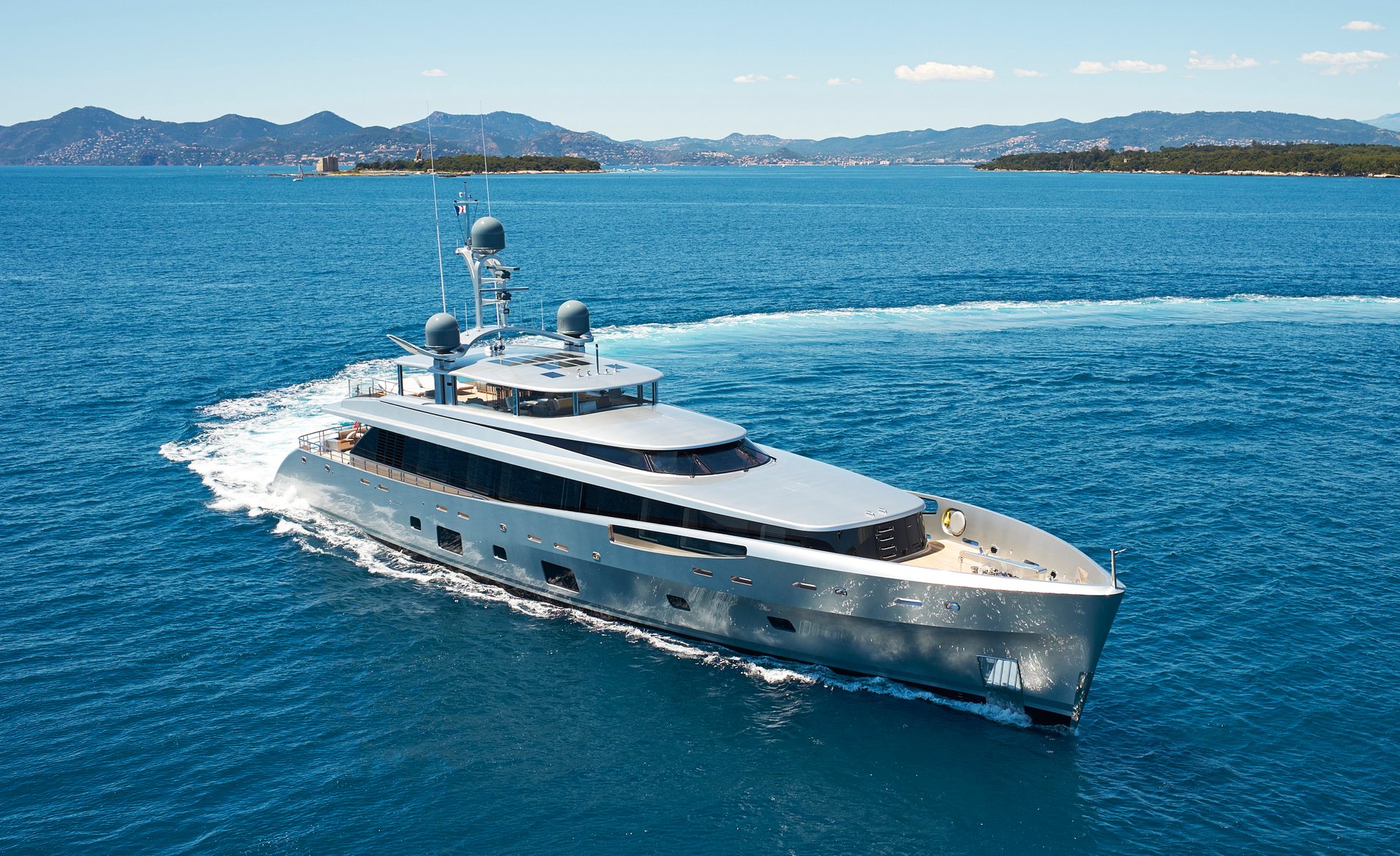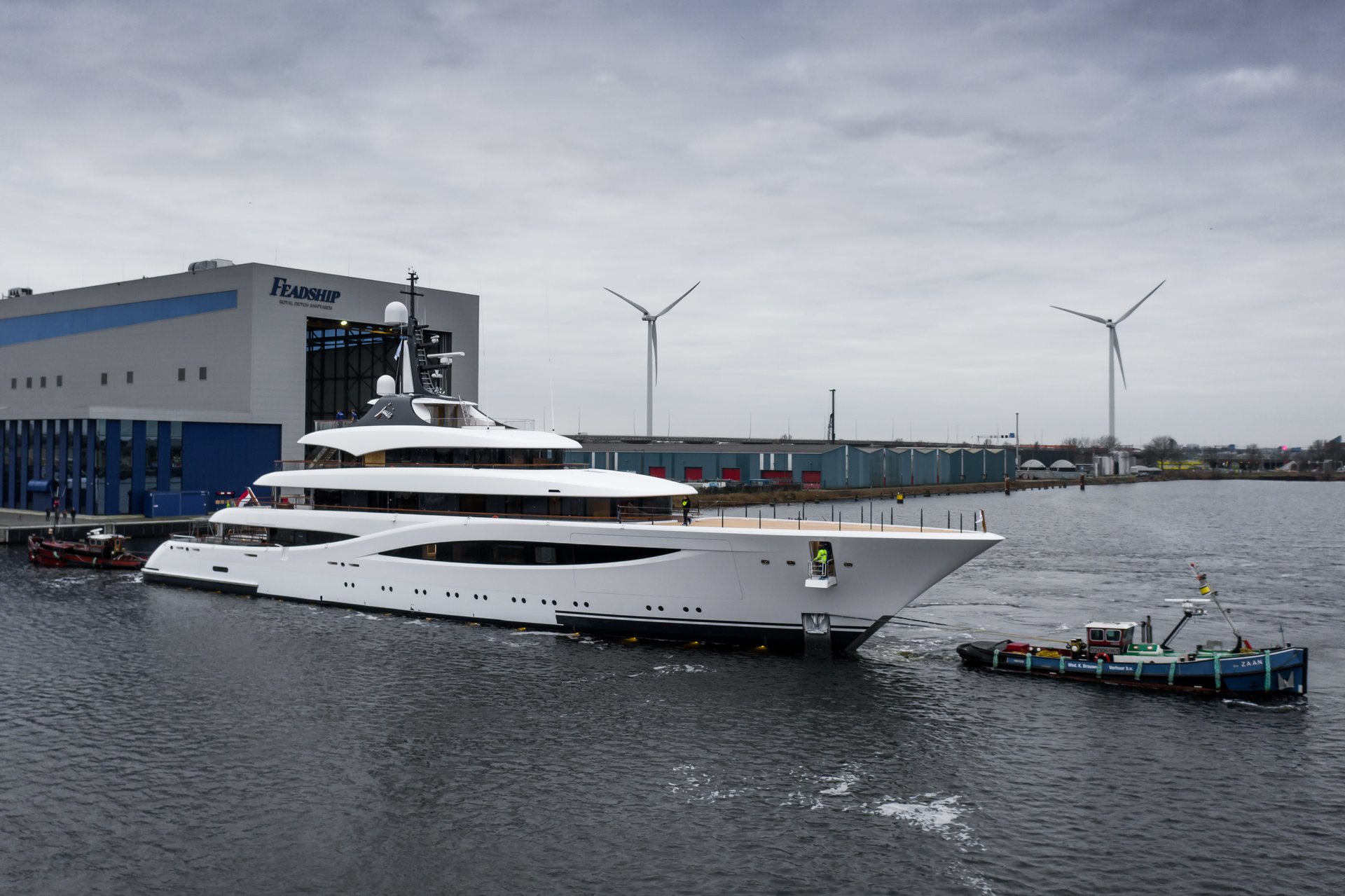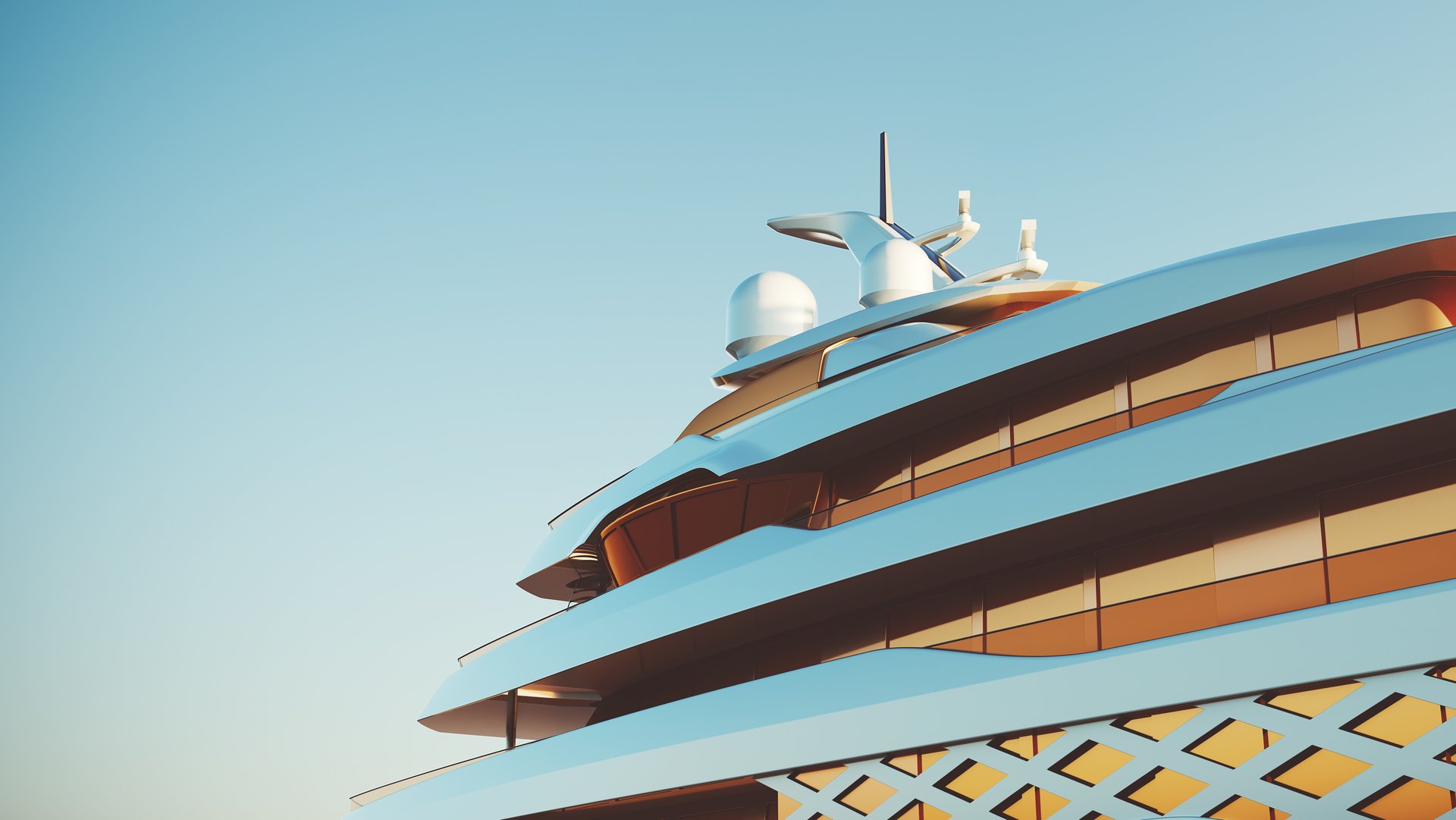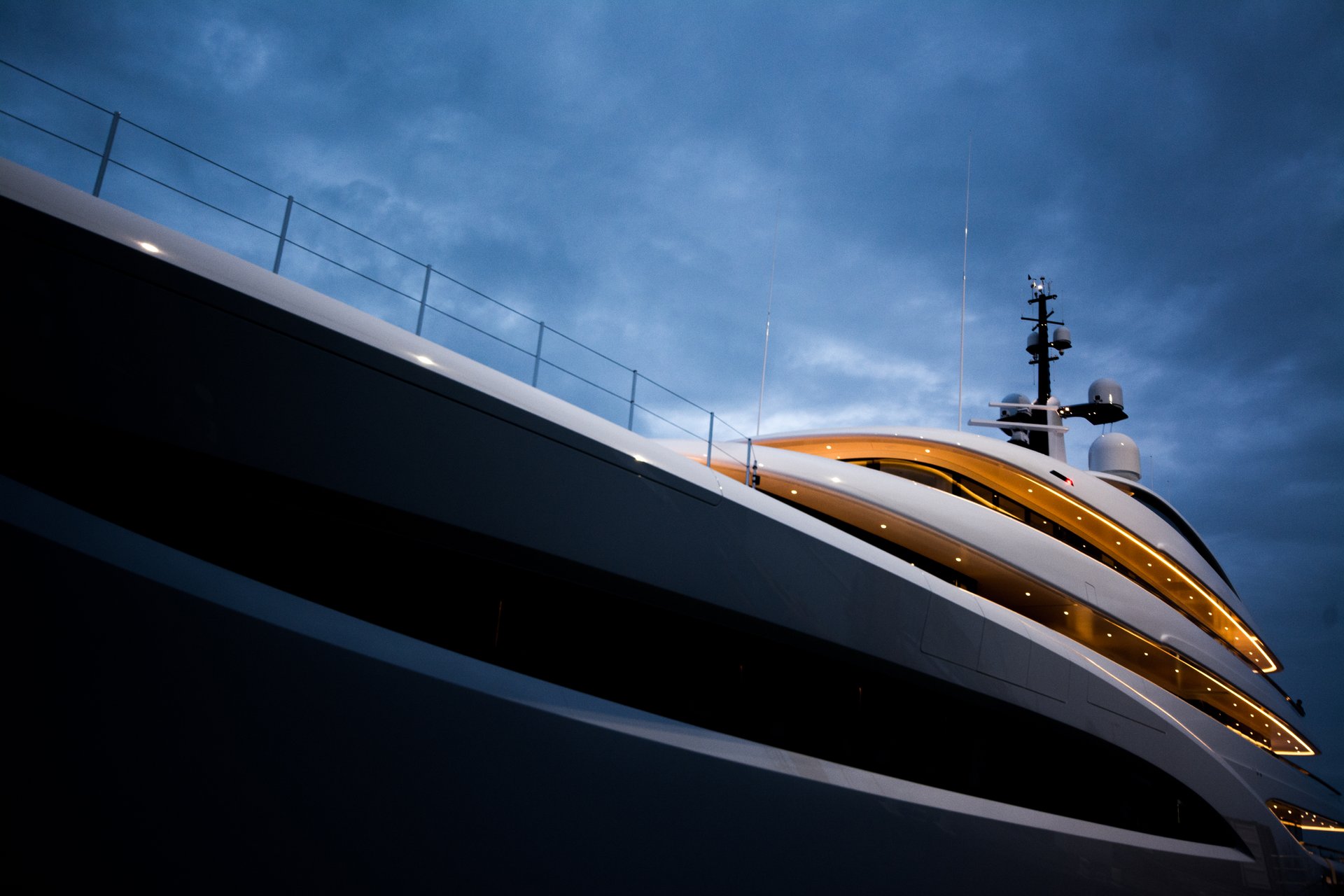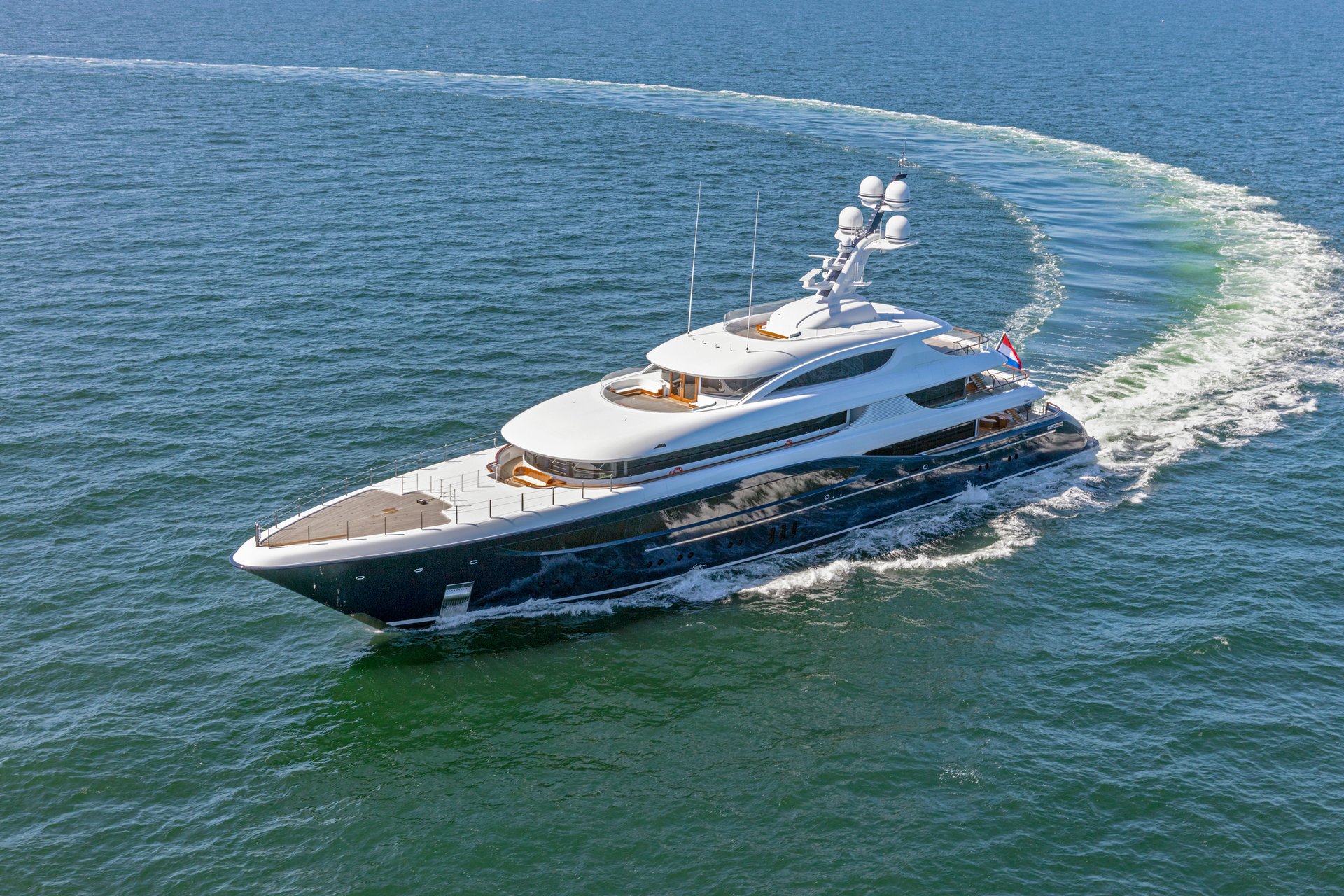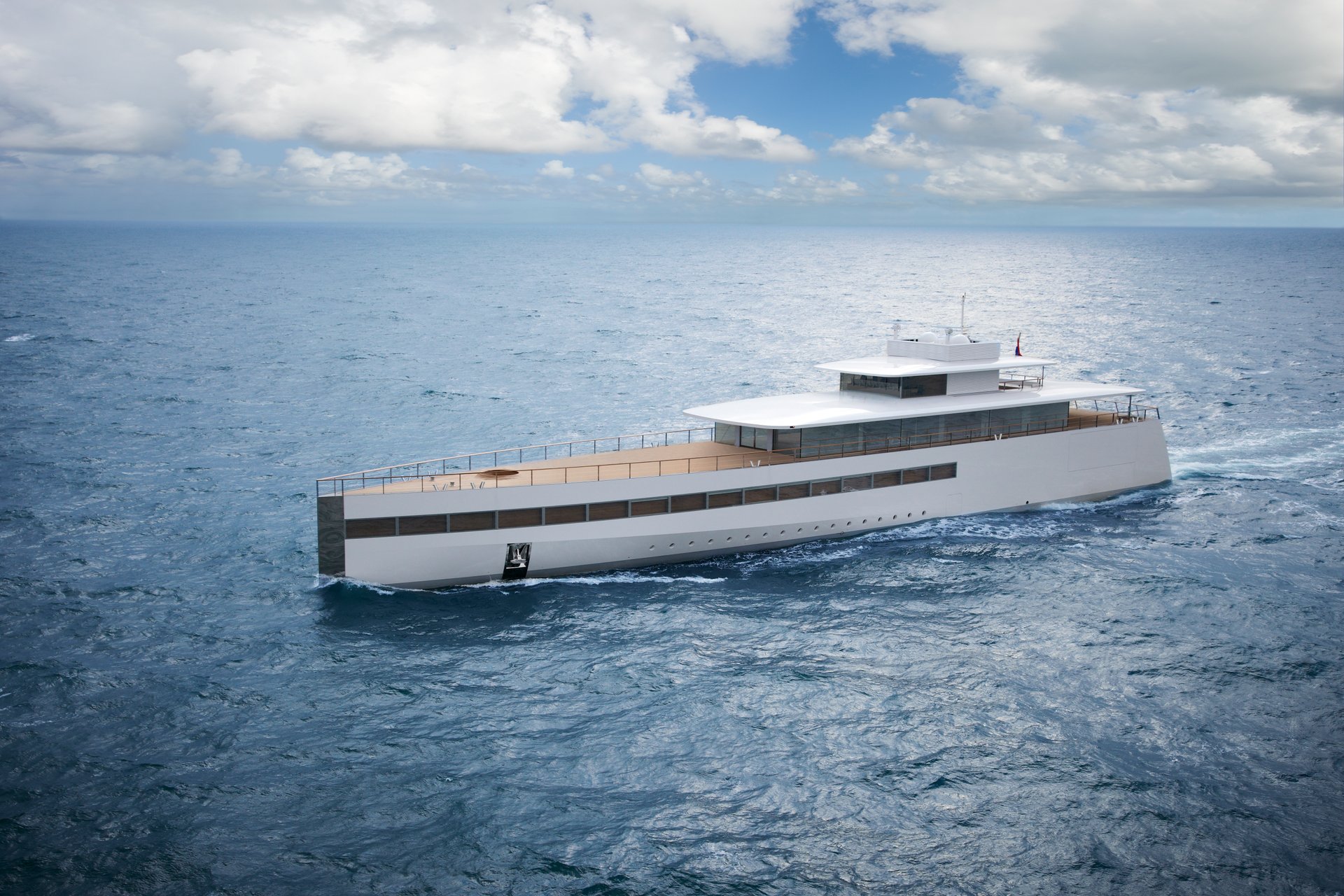The launch of the 46.22-metre Feadship Como again drew attention to Feadship’s pioneering use of glass in 2014. The client requested unprecedentedly large windows in the hull and a wealth of glass in her superstructure.
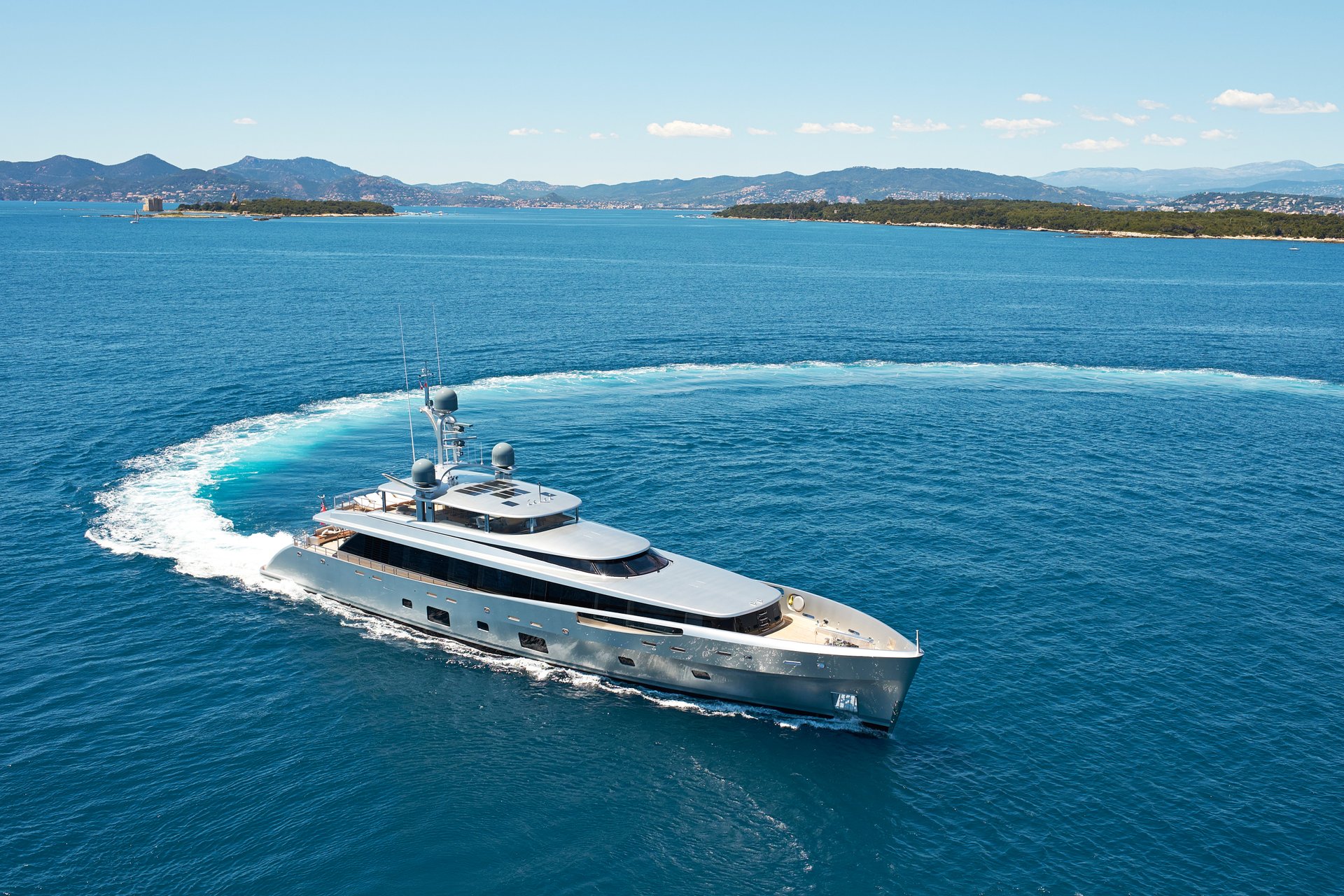
Glass Structures
Like every custom project at Feadship, Como’s owner’s requirements were met in style. And following on from other recent launches that have highlighted the art of glass such as Hampshire II, Musashi and Venus, thoughts now turn to the next logical – but seriously complex – innovation, namely using glass structures to also support structural loads from the decks above.
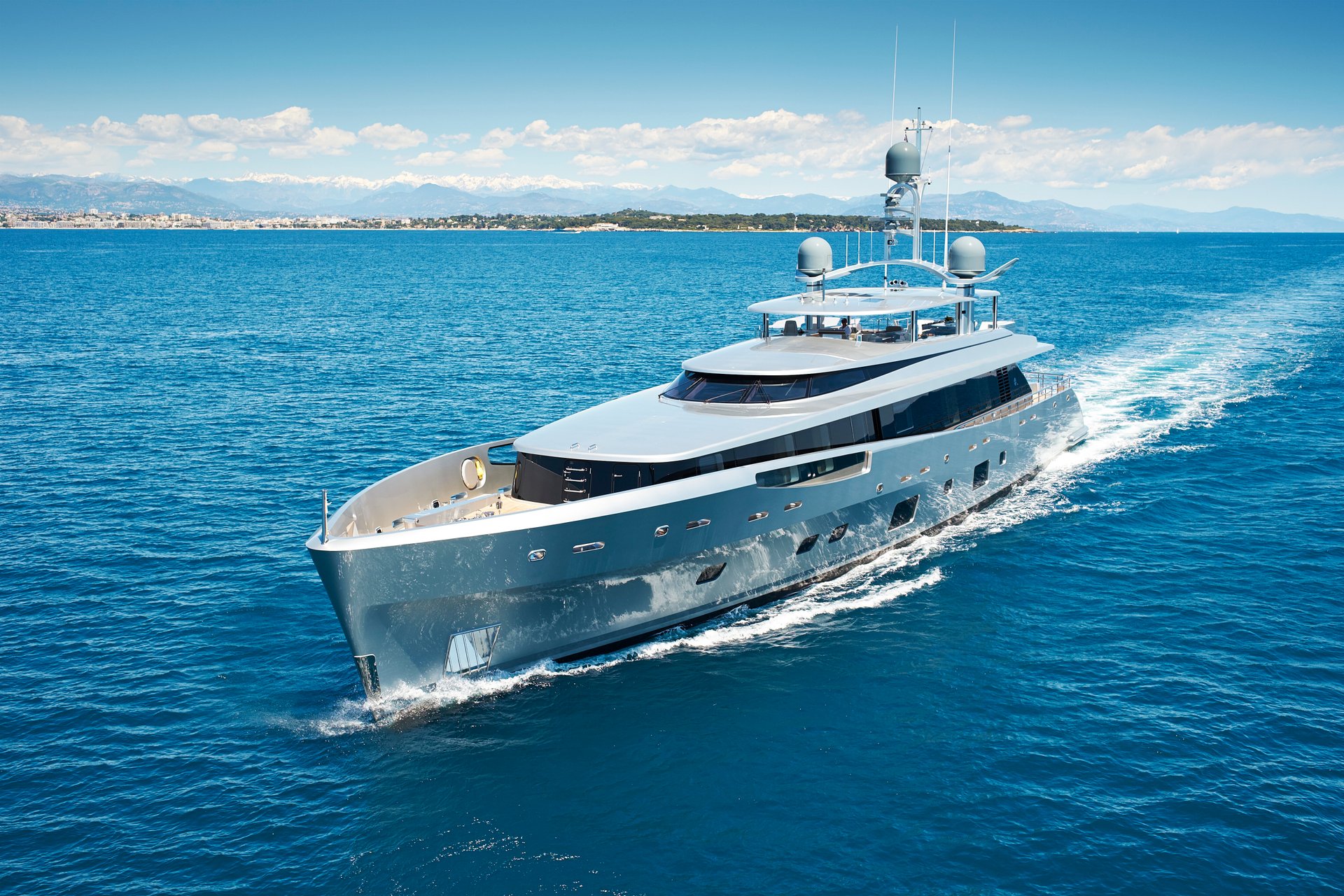
Glass determines the look
The advance of technology in the use of glass is radically changing the look of superyachts in the same way that it transformed land-based architecture. Today glass determines the look of most buildings, and its use on large yachts has been constantly on the rise over the decades. In 1960 the average proportion of glass within yacht silhouettes was around seven percent, a figure which had doubled by 1990 as windows became larger, were placed closer to each other, and played a far more prominent role in styling.
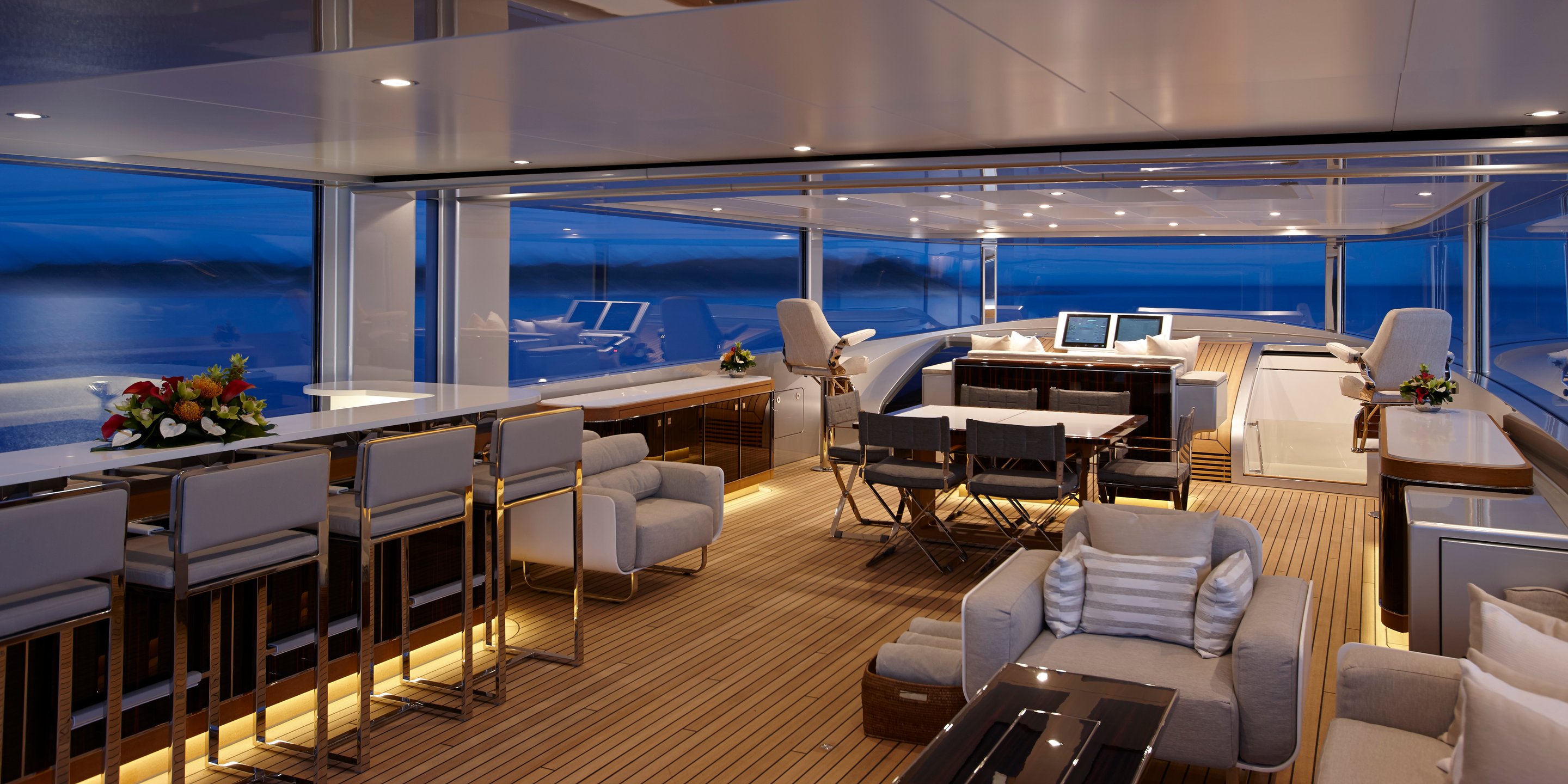

The impact of glass
Glass panes have a major impact on the routing of ducting, piping and cables. A layout concept was developed with a structural core containing stairs, ducting and technical spaces similar to buildings. This was first used in the 88-metre Feadship Mushashi in 2010, where the structural elements around the luxury interior spaces were kept to a minimum and the proportion of glass to metal in her exterior profile is over 20 percent.
The advance of technology in the use of glass is radically changing the look of superyachts in the same way that it transformed land-based architecture
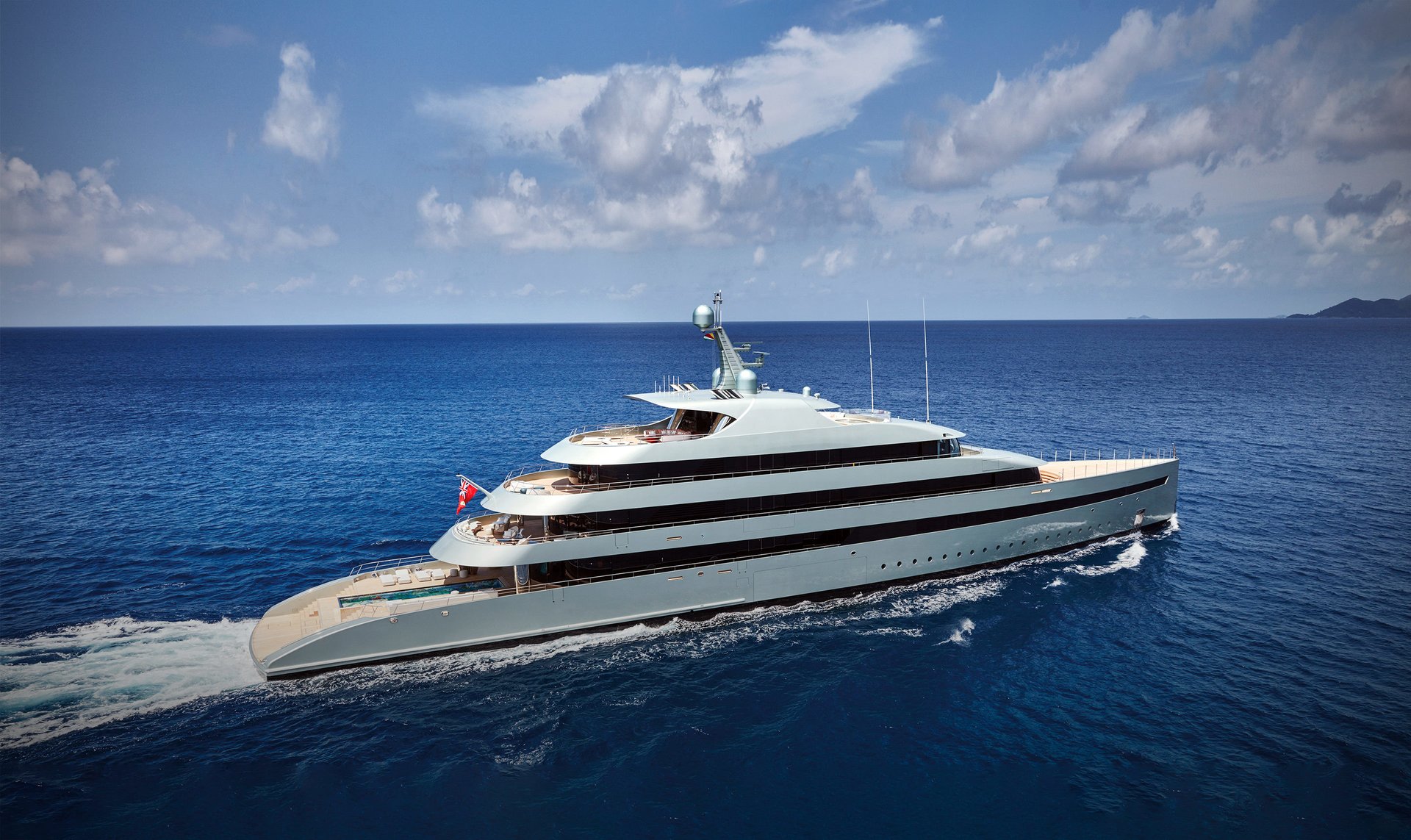
Hybrid propulsion
The world’s first hybrid motoryacht
Inspired by the 2010 Feadship Future Concept Breathe, Savannah is a demonstration of the cost-effective and cleaner mode of propulsion that can be achieved within an entirely bespoke superyacht. Savannah has a dynamic hull…

